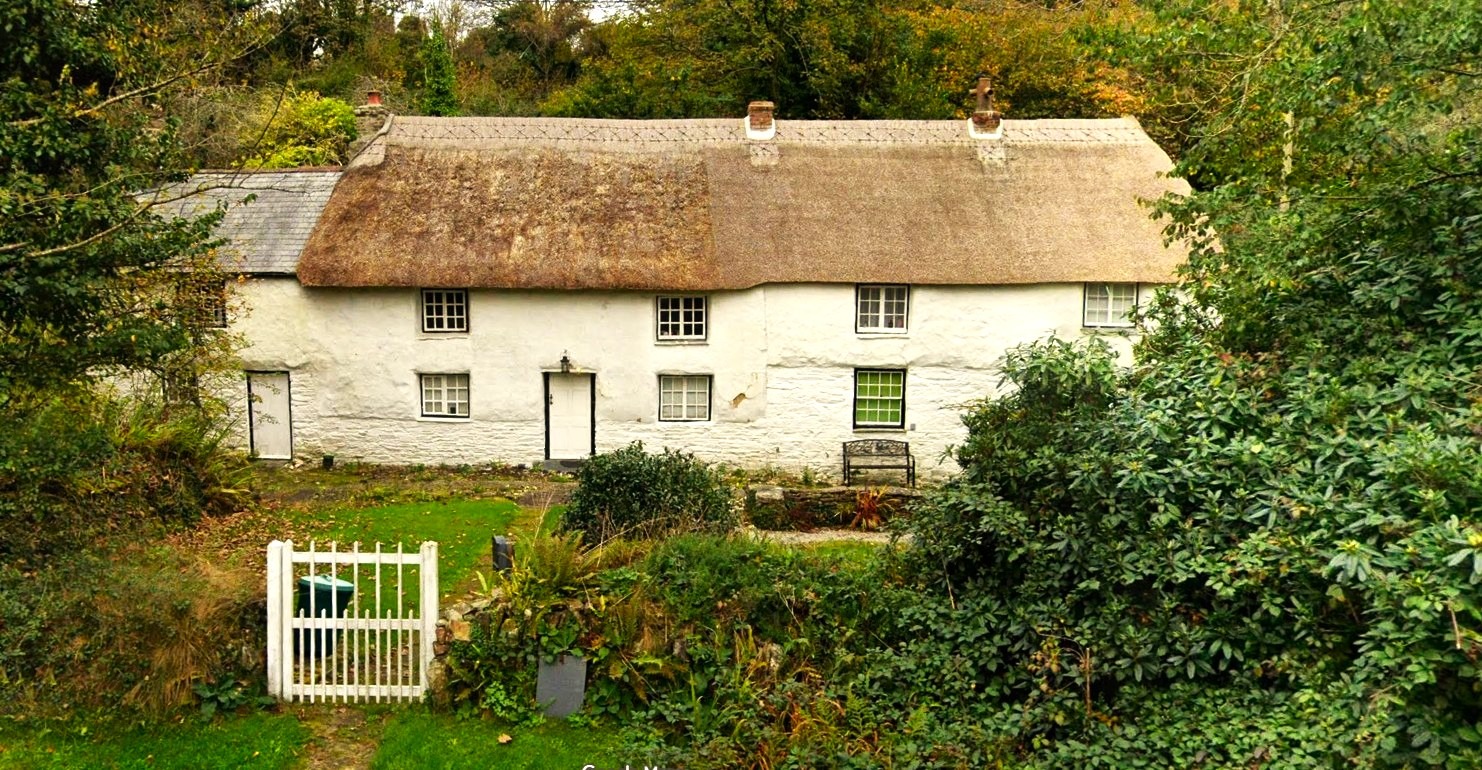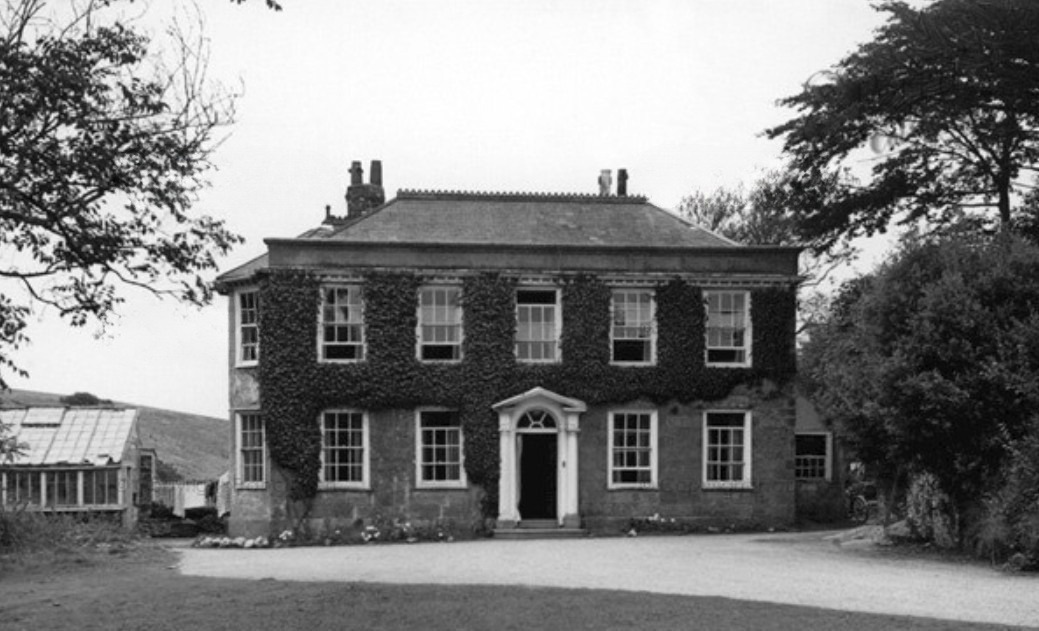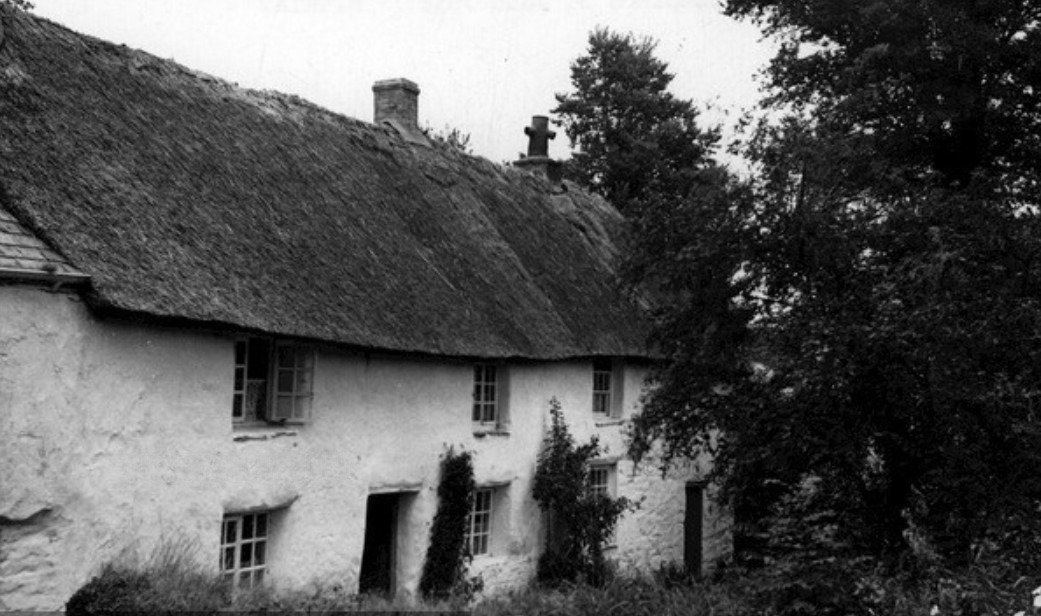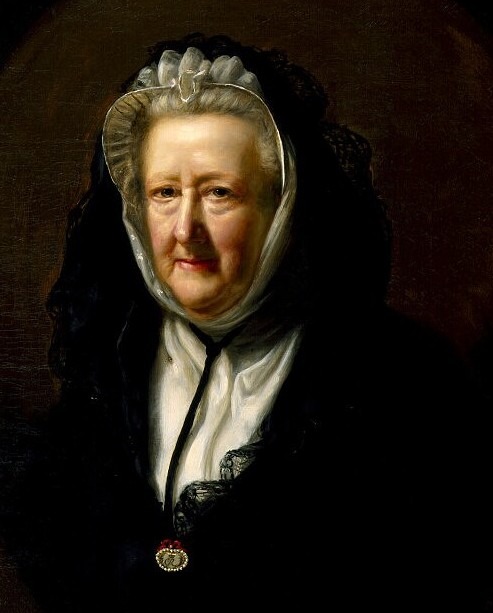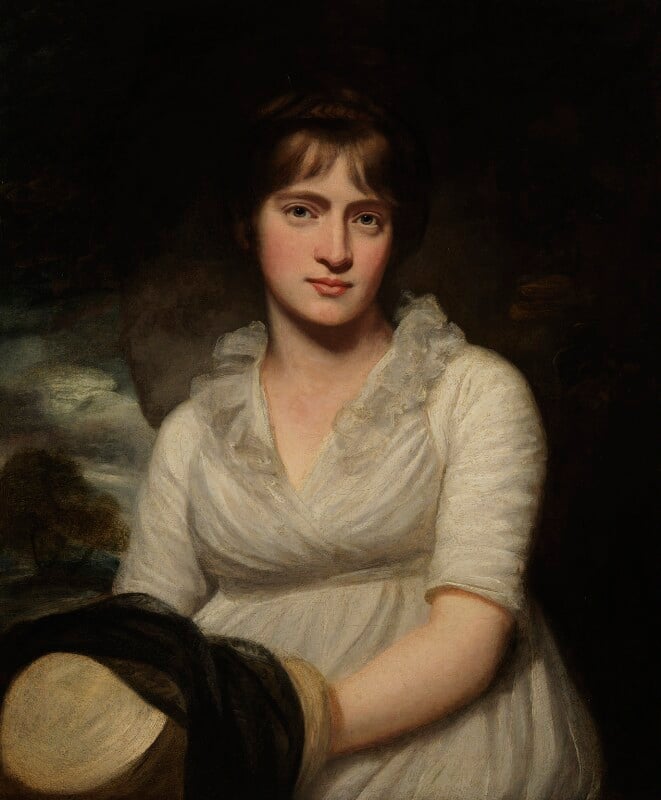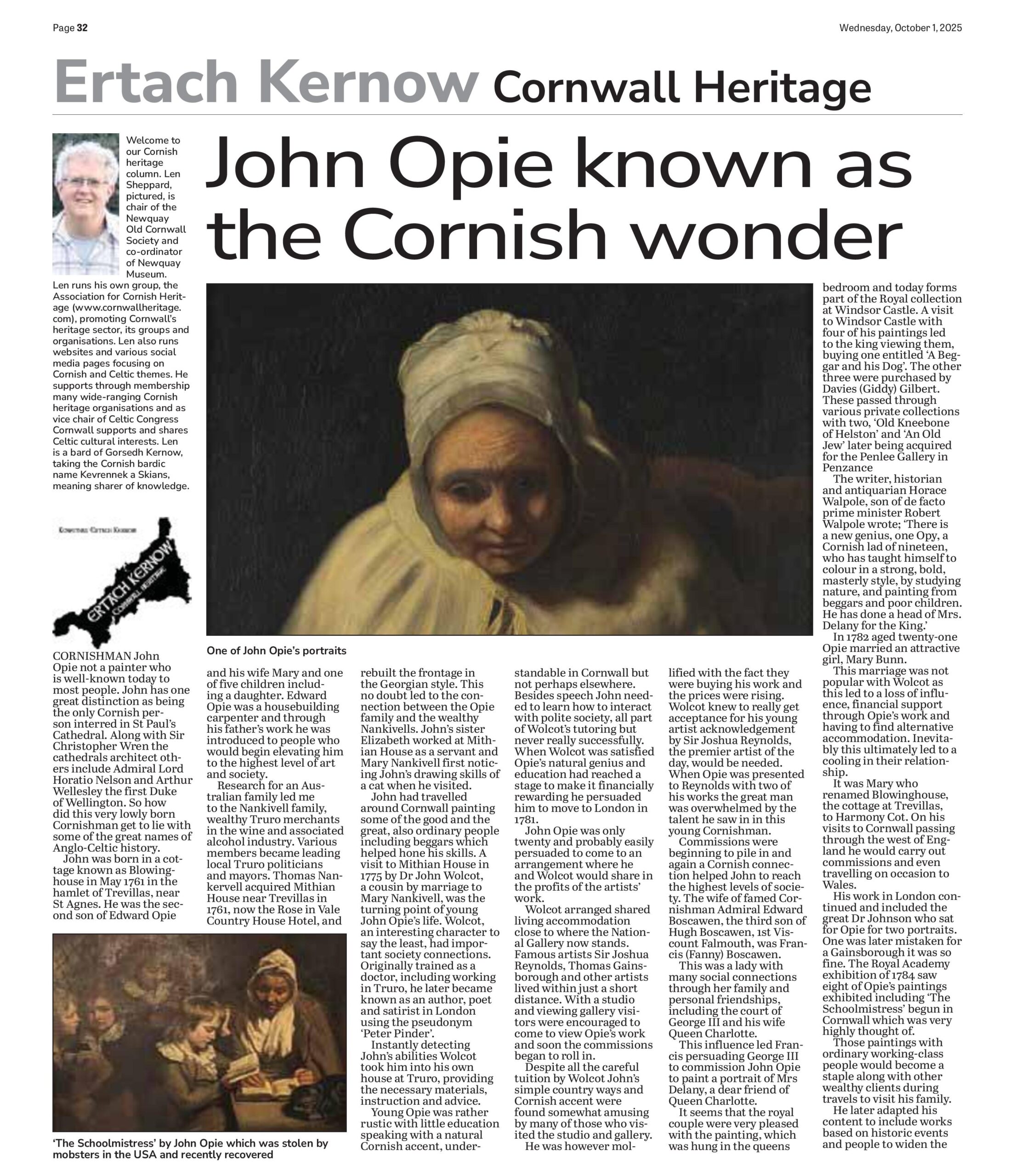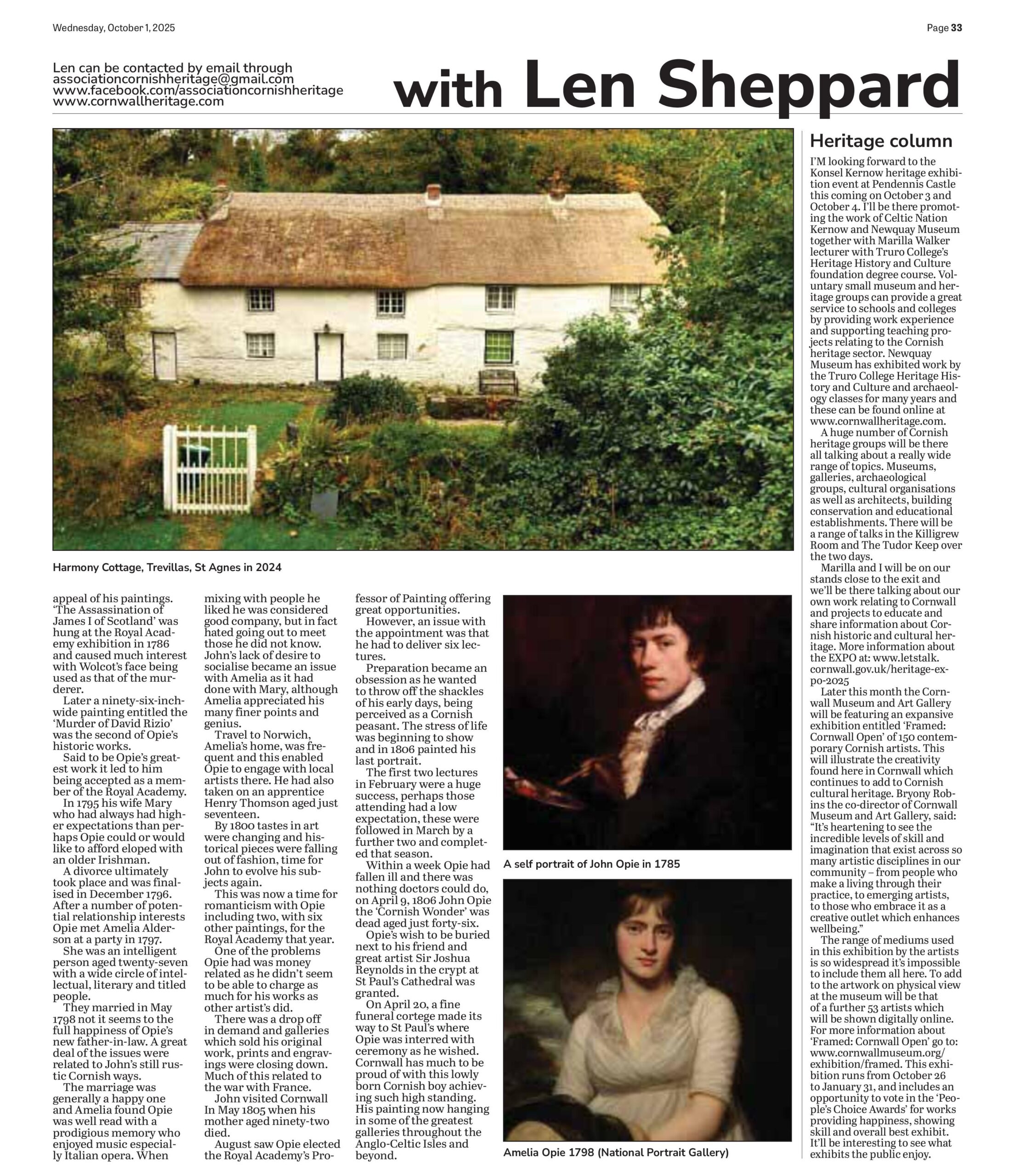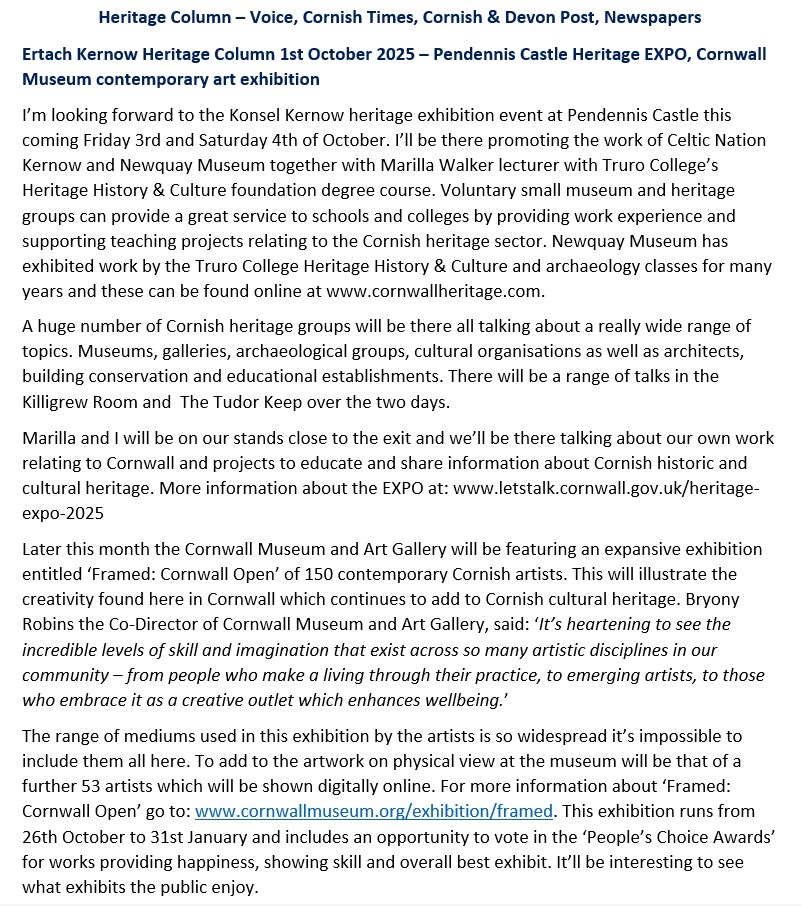Ertach Kernow - John Opie known as the Cornish wonder
Cornishman John Opie not a painter who is well-known today to most people. John has one great distinction as being the only Cornish person interred in St Paul’s Cathedral. Along with Sir Christopher Wren the cathedrals architect others include Admiral Lord Horatio Nelson and Arthur Wellesley the first Duke of Wellington. So how did this very lowly born Cornishman get to lie with some of the great names of Anglo-Celtic history.
John was born in a cottage known as Blowinghouse in May 1761 in the hamlet of Trevillas, near St Agnes. He was the second son of Edward Opie and his wife Mary and one of five children including a daughter. Edward Opie was a housebuilding carpenter and through his father’s work he was introduced to people who would begin elevating him to the highest level of art and society.
Research for an Australian family led me to the Nankivell family, wealthy Truro merchants in the wine and associated alcohol industry. Various members became leading local Truro politicians and mayors. Thomas Nankervell acquired Mithian House near Trevillas in 1761, now the Rose in Vale Country House Hotel, and rebuilt the frontage in the Georgian style. This no doubt led to the connection between the Opie family and the wealthy Nankivells. John’s sister Elizabeth worked at Mithian House as a servant and Mary Nankivell first noticing John’s drawing skills of a cat when he visited.
Thank you for reading the online version of the Ertach Kernow weekly articles. These take some 12 hours each week to research, write and then upload to the website, and is unpaid. It would be most appreciated if you would take just a couple of minutes to complete the online survey marking five years of writing these weekly articles. Many thanks.
Click the link for survey: Ertach Kernow fifth anniversary survey link
As always click the images for larger view
John had travelled around Cornwall painting some of the good and the great, also ordinary people including beggars which helped hone his skills. A visit to Mithian House in 1775 by Dr John Wolcot, a cousin by marriage to Mary Nankivell, was the turning point of young John Opie’s life. Wolcot, an interesting character to say the least, had important society connections. Originally trained as a doctor, including working in Truro, he later became known as an author, poet and satirist in London using the pseudonym ‘Peter Pinder’. Instantly detecting John’s abilities Wolcot took him into his own house at Truro, providing the necessary materials, instruction and advice. Young Opie was rather rustic with little education speaking with a natural Cornish accent, understandable in Cornwall but not perhaps elsewhere. Besides speech John needed to learn how to interact with polite society, all part of Wolcot’s tutoring but never really successfully. When Wolcot was satisfied Opie’s natural genius and education had reached a stage to make it financially rewarding he persuaded him to move to London in 1781.
John Opie was only twenty and probably easily persuaded to come to an arrangement where he and Wolcot would share in the profits of the artists’ work. Wolcot arranged shared living accommodation close to where the National Gallery now stands. Famous artists Sir Joshua Reynolds, Thomas Gainsborough and other artists lived within just a short distance. With a studio and viewing gallery visitors were encouraged to come to view Opie’s work and soon the commissions began to roll in. Despite all the careful tuition by Wolcot John’s simple country ways and Cornish accent were found somewhat amusing by many of those who visited the studio and gallery. He was however mollified with the fact they were buying his work and the prices were rising. Wolcot knew to really get acceptance for his young artist acknowledgement by Sir Joshua Reynolds, the premier artist of the day, would be needed. When Opie was presented to Reynolds with two of his works the great man was overwhelmed by the talent he saw in in this young Cornishman.
Commissions were beginning to pile in and again a Cornish connection helped John to reach the highest levels of society. The wife of famed Cornishman Admiral Edward Boscawen, the third son of Hugh Boscawen, 1st Viscount Falmouth, was Francis (Fanny) Boscawen. This was a lady with many social connections through her family and personal friendships, including the court of George III and his wife Queen Charlotte. This influence led Francis persuading George III to commission John Opie to paint a portrait of Mrs Delany, a dear friend of Queen Charlotte. It seems that the royal couple were very pleased with the painting, which was hung in the queens bedroom and today forms part of the Royal collection at Windsor Castle. A visit to Windsor Castle with four of his paintings led to the king viewing them, buying one entitled ‘A Beggar and his Dog’. The other three were purchased by Davies (Giddy) Gilbert. These passed through various private collections with two, ‘Old Kneebone of Helston’ and ‘An Old Jew’ later being acquired for the Penlee Gallery in Penzance
The writer, historian and antiquarian Horace Walpole, son of de facto prime minister Robert Walpole wrote; ‘There is a new genius, one Opy, a Cornish lad of nineteen, who has taught himself to colour in a strong, bold, masterly style, by studying nature, and painting from beggars and poor children. He has done a head of Mrs. Delany for the King.’
In 1782 aged twenty-one Opie married an attractive girl, Mary Bunn. This marriage was not popular with Wolcot as this led to a loss of influence, financial support through Opie’s work and having to find alternative accommodation. Inevitably this ultimately led to a cooling in their relationship. It was Mary who renamed Blowinghouse, the cottage at Trevillas, to Harmony Cot. On his visits to Cornwall passing through the west of England he would carry out commissions and even travelling on occasion to Wales.
His work in London continued and included the great Dr Johnson who sat for Opie for two portraits. One was later mistaken for a Gainsborough it was so fine. The Royal Academy exhibition of 1784 saw eight of Opie’s paintings exhibited including ‘The Schoolmistress’ begun in Cornwall which was very highly thought of. Those paintings with ordinary working-class people would become a staple along with other wealthy clients during travels to visit his family. He later adapted his content to include works based on historic events and people to widen the appeal of his paintings. ‘The Assassination of James I of Scotland’ was hung at the Royal Academy exhibition in 1786 and caused much interest with Wolcot’s face being used as that of the murderer. Later a ninety-six-inch-wide painting entitled the ‘Murder of David Rizio’ was the second of Opie’s historic works. Said to be Opie’s greatest work it led to him being accepted as a member of the Royal Academy.
In 1795 his wife Mary who had always had higher expectations than perhaps Opie could or would like to afford eloped with an older Irishman. A divorce ultimately took place and was finalised in December 1796. After a number of potential relationship interests Opie met Amelia Alderson at a party in 1797. She was an intelligent person aged twenty-seven with a wide circle of intellectual, literary and titled people. They married in May 1798 not it seems to the full happiness of Opie’s new father-in-law. A great deal of the issues were related to John’s still rustic Cornish ways. The marriage was generally a happy one and Amelia found Opie was well read with a prodigious memory who enjoyed music especially Italian opera. When mixing with people he liked he was considered good company, but in fact hated going out to meet those he did not know. John’s lack of desire to socialise became an issue with Amelia as it had done with Mary, although Amelia appreciated his many finer points and genius.
Travel to Norwich, Amelia’s home, was frequent and this enabled Opie to engage with local artists there. He had also taken on an apprentice Henry Thomson aged just seventeen. By 1800 tastes in art were changing and historical pieces were falling out of fashion, time for John to evolve his subjects again. This was now a time for romanticism with Opie including two, with six other paintings, for the Royal Academy that year. One of the problems Opie had was money related as he didn’t seem to be able to charge as much for his works as other artist’s did. There was a drop off in demand and galleries which sold his original work, prints and engravings were closing down. Much of this related to the war with France.
John visited Cornwall In May 1805 when his mother aged ninety-two died,. August saw Opie elected the Royal Academy’s Professor of Painting offering great opportunities. However, an issue with the appointment was that he had to deliver six lectures. Preparation became an obsession as he wanted to throw off the shackles of his early days, being perceived as a Cornish peasant. The stress of life was beginning to show and in 1806 painted his last portrait. The first two lectures in February were a huge success, perhaps those attending had a low expectation, these were followed in March by a further two and completed that season. Within a week Opie had fallen ill and there was nothing doctors could do, on 9th April 1806 John Opie the ‘Cornish Wonder’ was dead aged just forty-six.
Opie’s wish to be buried next to his friend and great artist Sir Joshua Reynolds in the crypt at St Paul’s Cathedral was granted. On 20th April a fine funeral cortege made its way to St Paul’s where Opie was interred with ceremony as he wished. Cornwall has much to be proud of with this lowly born Cornish boy achieving such high standing. His painting now hanging in some of the greatest galleries throughout the Anglo-Celtic Isles and beyond.

